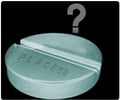93 percent of 2235 so-called random clinical trials published in some Chinese medical journals during 1994 to 2005 were flawed
Research published in BioMed Central's open access journal Trials shows that the design of a remarkable 93 percent of 2235 so-called random clinical trials published in some Chinese medical journals during 1994 to 2005 was flawed. These findings cast doubt on the reliability of research that is likely to influence medical decision-makers.
Researchers led by Taixiang Wu of the Chinese Cochrane Centre at Sichuan University, China and Ottawa Hospital Research Institute investigated clinical trials published in China between 1994 and 2005, searching the China National Knowledge Infrastructure (CNKI) electronic database for RCTs on 20 common diseases. To determine how many of these met recognised standards for randomly allocating participants to treatment groups, trained investigators interviewed the first or co-authors of 2235 trial reports by phone.Less than seven percent of self-described RCTs published in some Chinese medical journals meet criteria for authentic randomisation. The researchers looked at both conventional and traditional Chinese medicine trials, but there was no difference between these in terms of study authenticity rates. However, all RCTs of pre-market drug clinical trial were authentic, and RCTs conducted at hospitals affiliated with medical universities were more likely to be authentic than trials conducted at lower tier level three and level two hospitals. More than half of the trials at university-affiliated hospitals met RCT criteria, which means lower-tier hospital research is the least rigorous in design terms.
"The fact that so many non-RCTs were published as RCTs reflected that peer-review needs to be improved and a Good Practice of Peer Review, including how to identify the authenticity of the study, urgently needs to be developed," says Wu.
Misleading reporting of medical research is not unique to China. Studies labelled as RCTs are more likely to influence health policy-makers meaning falsely reported RCTs have the potential to mislead health care providers, consumers and policy-makers. The results of this study suggest authors of systematic reviews – articles that combine the results of multiple RCTs – need to be aware that RCTs in some Chinese journals may not be RCTs at all.
The approximately 1100 medical journals now active in China are rapidly increasing their output of research reports, including many identified by their authors as RCTs. But these trials present mostly positive results (they favour the treatment being investigated), which can be influenced by inadequate randomisation of patients when designing the study.
Advertisement
RAS










